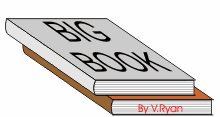| CLICK HERE FOR INDEX PAGE | |
| MATERIALS FOR PACKAGING - PAPER AND CARD | |
| V. Ryan © 2004-2018 | |
| PDF FILE - CLICK HERE FOR PRINTABLE WORKSHEET | |
| PDF - POSTER - PAPER AND BOARDS | |
|
CARTRIDGE PAPER - is used for general drawing. It is often good quality and generally 100 to 135g in thickness. This paper is used for design and technology projects and will take colour from pencils and felt pens without too much leaking to the opposite side of the paper. |
 |
|
|
|
|
CARDBOARD - is thicker than paper as it is made up of a number of layers, glue or laminated together. The diagram opposite shows a net / development of a package. It can be folded to produce a carton. |
|
|
|
|
|
DUPLEX BOARD - This is used for containers and can contain liquids as it may have a water-proof liner on the inside. It can have a wax feel. This type of card is used by the food industry and consequently recycled card is not used in its manufacture. |
|
|
SOLID WHITE BOARD - This is normally top quality cardboard made from quality bleached wood pulp. It is the best card for printing on to and consequently it is used for hard backed books and more expensive items. |
|
|
CORRUGATED BOARD - This type of board is often used for packaging large electrical items. These large boxes (often brown in colour) protect the contents from damage. Corrugated board is strong because it is composed of a top and bottom layer and in between there is a triangulated section. A triangular section is very strong compared to its weight. |
|
|
FOIL LINED BOARD - is good quality cardboard with a aluminium foil lining. This type of container is ideal for ready made meals or take away meals. The foil retains the heat and helps keep the food warm. |
|
|
TRACING PAPER -Is
used pupils, students and designers. It allows the designer to copy an
existing drawing / shape. Tracing paper can be useful when there is a
need to produce several drawings that are based on the same outline. |
|
BLEED PROOF PAPER - does not allow felt pens / ink pens (water or spirit based), to spread / bleed through or across the surface. When a felt pen or ink pen is used on the surface of cartridge paper, accuracy can be lost, as the ink is absorbed and spreads out, leaving an inaccurate line. Bleed proof paper has a coating that prevents this happening, leaving an accurate / precise line. 70gsm |
|
GRID PAPER - Is manufactured in a range of patterns, the most common being isometric and square grids. This type of layout helps when drawing in three dimensions (isometric) or drawing graphs and pictograms (graph paper). Standard 80gsm |
|
 |
|
INK JET CARD - A high quality paper, often used when a photograph is printed. The surface is normally gloss or matt, in texture. It is relatively expensive compared to cartridge or photocopying paper. 120 to 400gsm |
|
| LAYOUT PAPER - Is used by architects, designers and artists, to lay over the top of an existing drawing, in order to copy parts / aspects. Sometimes a designer will draw individual elements of a product, on separate sheets of layout paper. When put together, the various layers appear as one. This approach can be useful, when removing layers, to simplify a design or to show limited detail. 40 to 60gsm | |
 |
|
| CLICK HERE FOR PRODUCT DESIGN INDEX PAGE | |
|
|
|







